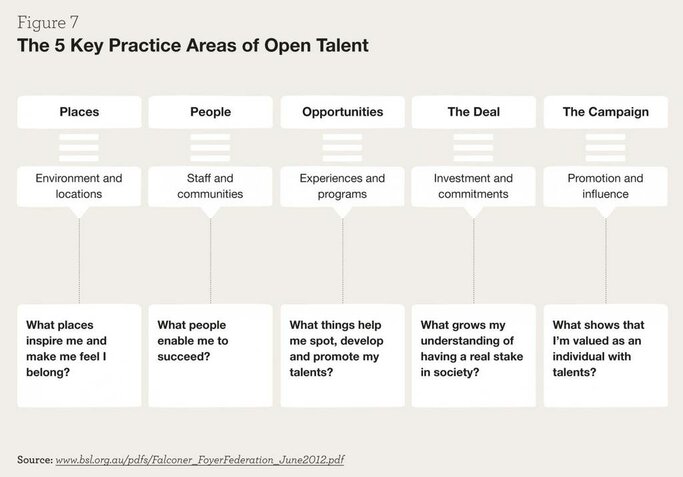Operationalising the Open Talent approach

Open Talent in Practice
This section outlines the purpose and qualities of the 5 Key Practice Areas of Open Talent, and the elements/actions needed for a thriving OT approach. It provides a checklist and series of questions for EFY Foyers so they can embed the OT approach in all aspects of policy and practice.
The OT, advantaged thinking approach recognises that with the right set of investments, young people’s talents can be scouted out and coached to build their potential. However, coaching alone is not sufficient in the OT approach.
The Open Talent/advantaged thinking approach is expressed through 5 Key Practice Areas. Whether the service area relates to education, employment, wellbeing or others these 5 areas need to be addressed in the practice relating to each of the areas.
Open Talent identifies 5 Key Practice Areas:
- Places – the physical environments that effect people’s capacity to develop their potential
- People – including staff, coaches, mentors and volunteers who can mobilise young people’s skills to become (in the words of Amartya Sen)80 ‘capabilities and not just functionings’
- Opportunities – that act as a lever to empower young people to thrive. By linking with resources and networks, young people can develop and use their skills
- The Deal – acts as another lever, it is a reciprocal ‘something for something’ agreement between the young person and the EFY Foyer that activates the rights and responsibilities for both parties
- The Campaign – is a third lever for engagement in the influencing agenda or campaign to reform the practice, program and policy settings that reinforce disadvantage and exclusion and prevent young people from reaching their potential.81

Open Talent identifies 5 key practice areas – Places, People, Opportunities, the Deal and the Campaign.
Download

Artwork title: Bamboo
Artist: James Barreca
I chose this image because it reminds me of tranquility, peace and solitude